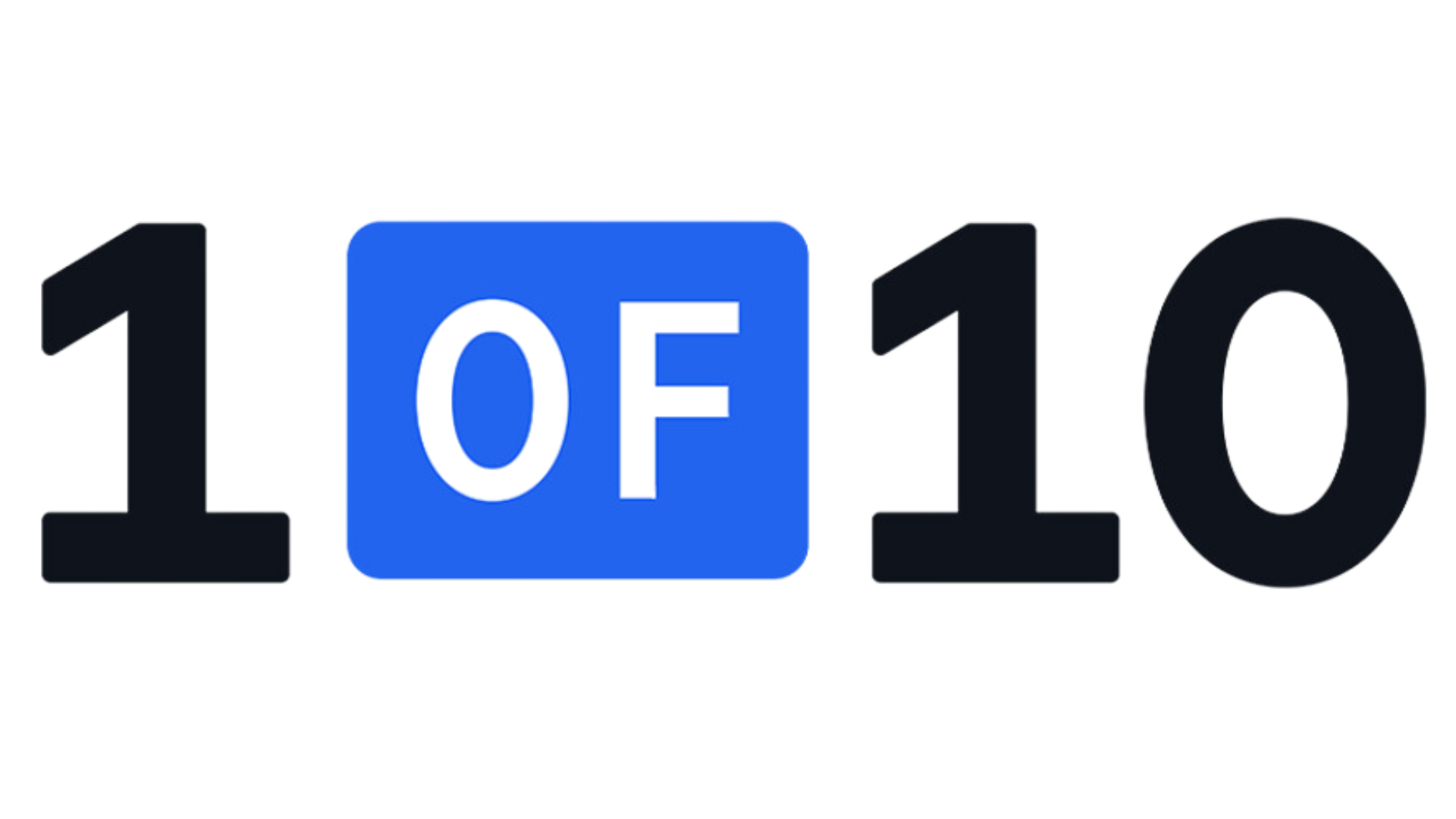How To Make Money On YouTube (With Examples)
There are many ways to make money on YouTube besides just ad revenue. You can partner with brands for sponsored content, promote products through affiliate marketing, sell your own digital products like courses, offer exclusive perks to channel members and more.
The best part about YouTube is that you can make money on your content. However, it can be challenging to understand what path to take when it comes to monetizing your videos since every creator earns in different ways on YouTube.
Today, we'll discuss six ways to earn money on YouTube and provide examples of creators who do each!
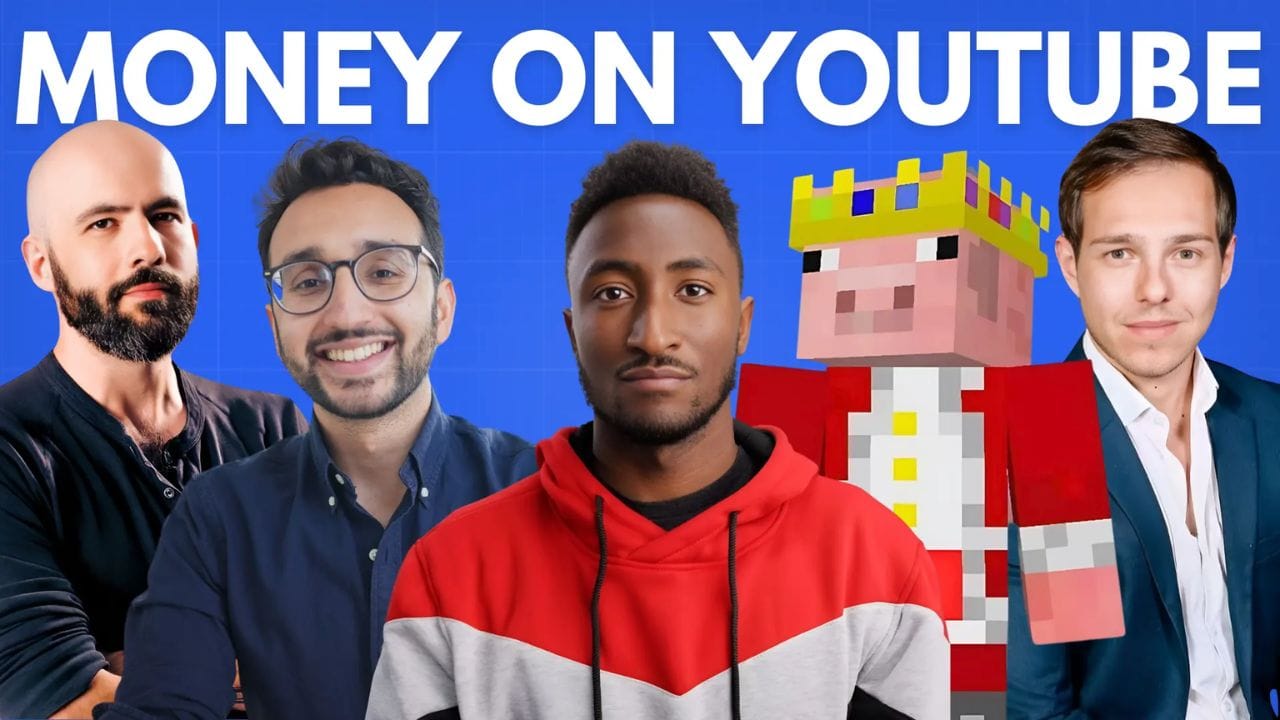
1 - Ad Revenue

What This Means
The most popular way to make money on YouTube is ad revenue.
YouTube places ads on your videos, and you earn money whenever someone watches or interacts with these ads. The amount you make depends on factors like video length, audience demographics, and the number of people watching the ads.
Unfortunately, to do this, you need to be part of the YouTube Partner Program. This means you need 1,000 subscribers and 4,000 hours of viewers watching your content, or 10 million short views.
Now, once you reach those stats and get accepted, all you need is for people to watch your content so you can make money.
It's important that you're aware of RPM, Revenue Per Mile, and the total revenue per one thousand views. Some niches, like personal finance, education, and tech, have higher RPMs, while some, like comedy or gaming, have lower. So, it's incredibly important to know the RPM of the niche you're in if that's how you'd like to make money on YouTube.
Graham Stephan is an excellent example of someone who makes a significant income via YouTube RPMs. His official channel alone is making over $100,000 a month: no employees, expenses, or advertising on his end. It's just him, a camera, and a laptop, making just over a million dollars a year through ad revenue.
He makes so much because he attracts high-paying advertisers like banks, investment platforms, and insurance companies in the Finance niche. His audience averages more income, so he, or should I say YouTube, can charge advertisers more for putting the ads in front of them.

2 - Sponsored Content
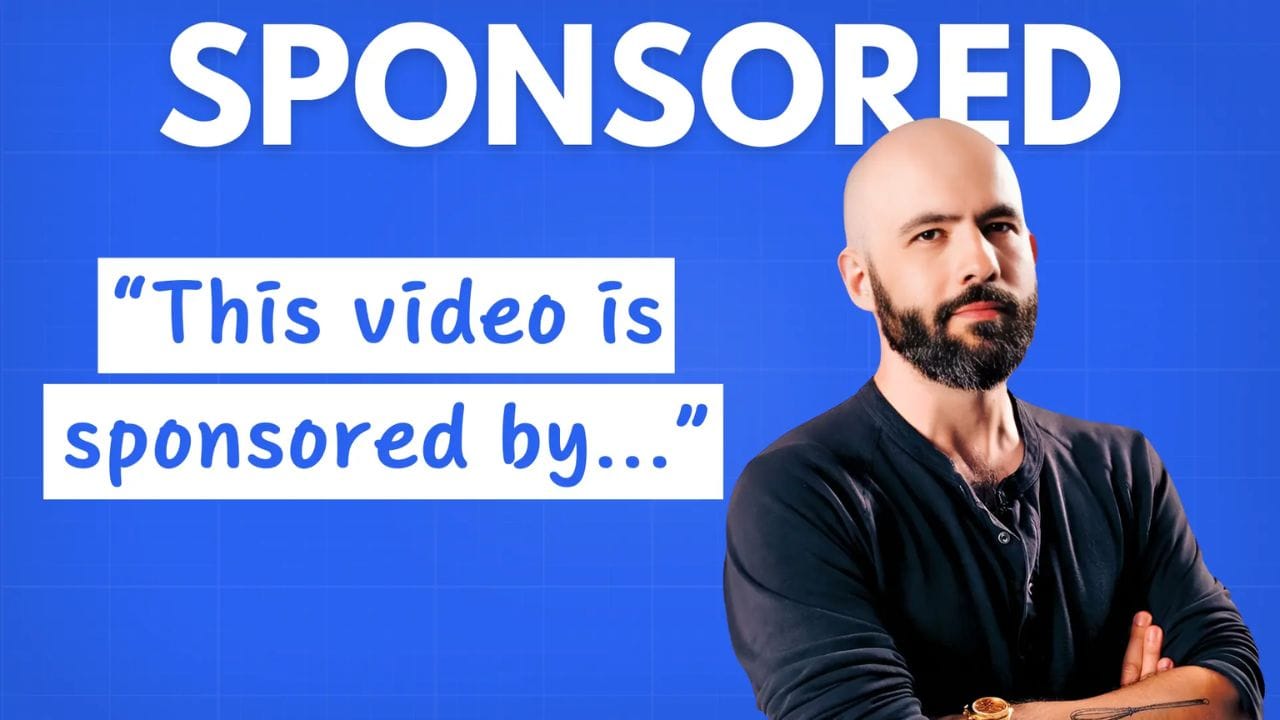
What This Means
We're all used to the phrase "This video is sponsored by..." Sponsored brand partnerships allow creators to collaborate with certain brands and sell their products to the creator's audience.
Companies pay you to feature their products or services in your videos. This could be a brief mention, a review, or an entire video focused on the thing you’re endorsing.
You can either reach out to brands, or brands can reach out to you. However, make sure to endorse brands that would make sense to sell to your audience. If not, you'll leave a wrong impression on your viewers, and their perspective of you will change from an authentic creator to a sellout.
A creator who attracts sponsors and endorses only what the audience can benefit from is Babish.

In this case, he's sponsoring a brand that allows his viewers to be trained by him.
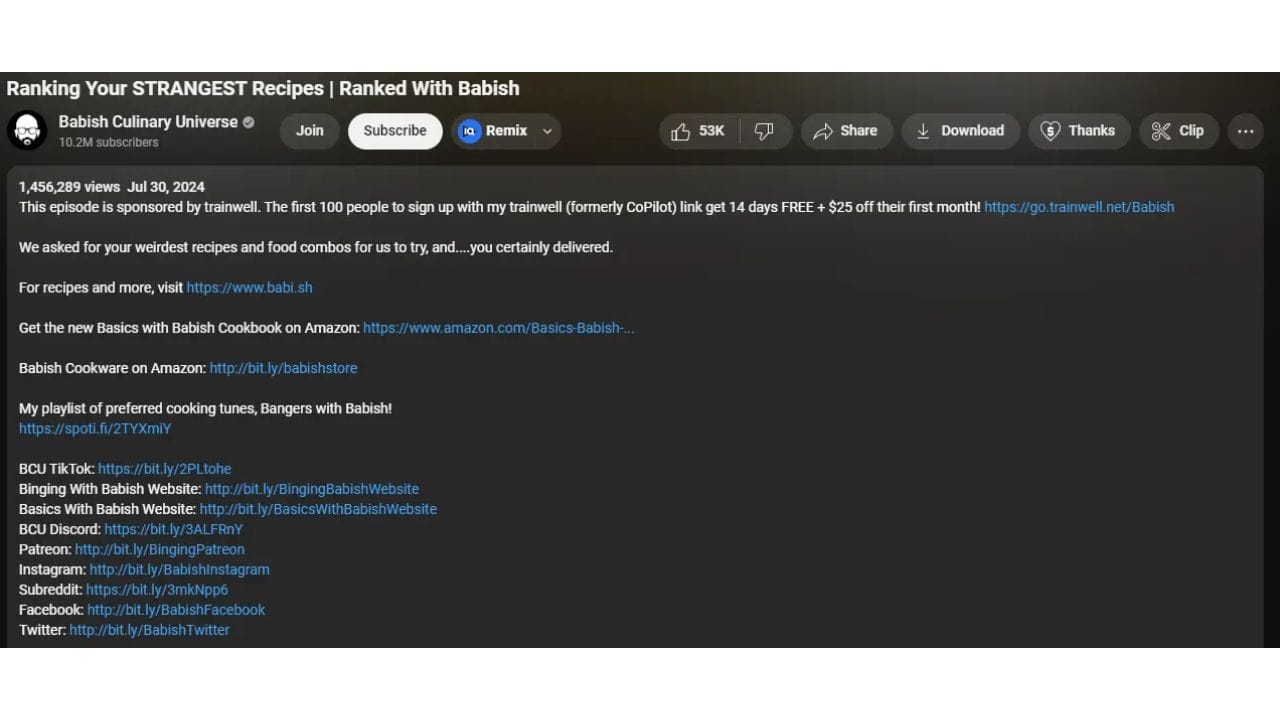

3 - Affiliate Marketing
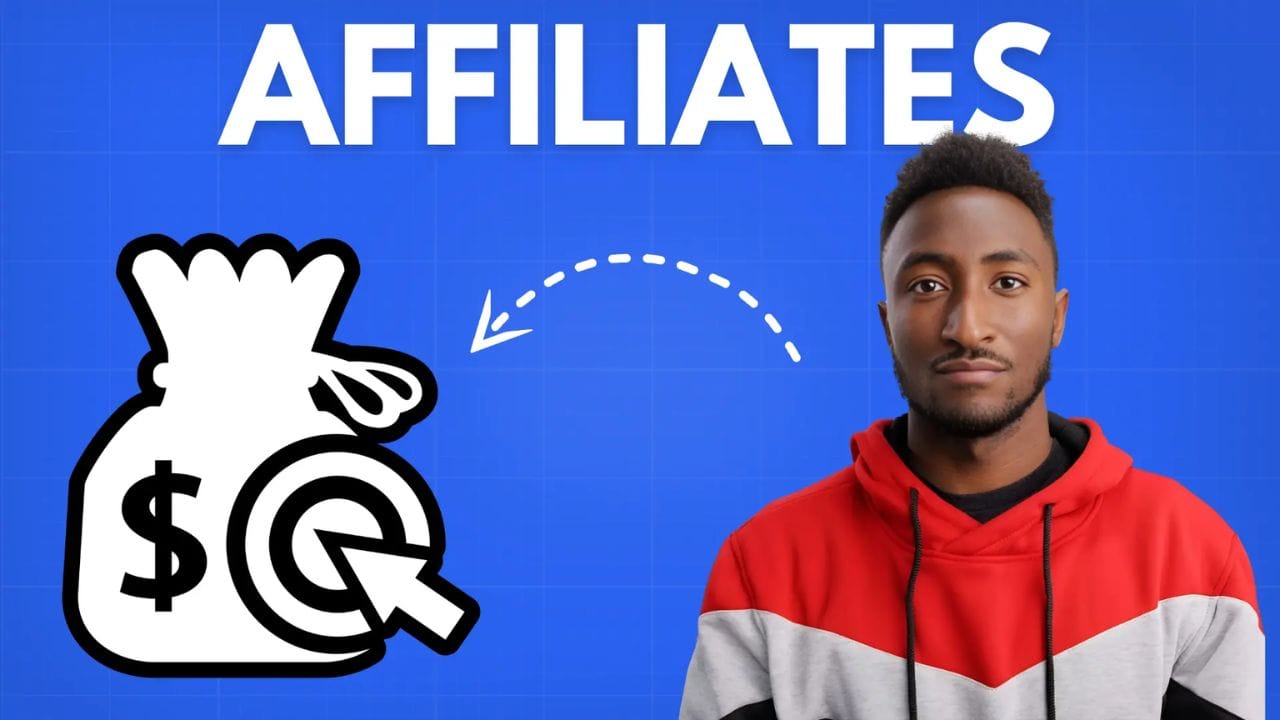
What This Means
This is as simple as it gets. You talk about a product and link your viewers to check it out in the description or the comment section.
Affiliate marketing is especially useful for creators who don’t have the largest following.
You promote products through special affiliate links and earn a commission for each sale you make through your link. Again, make sure you choose products that are relevant to your content and useful to your audience, very key.
Affiliate marketing can be an awesome way for creators to earn income without YouTube‘s partnership program. It's also perfect for reviews, such as tech.
Yes, that was a transition to talk about Marquise Brownlee. He reviews tech that he can include links to in the description, so when his viewers want to buy that product, he earns money.
4 - Courses or Digital Products

What This Means
If you’re knowledgeable in a certain niche, you can create and sell online courses, e-books, or other digital products. This is incredible for creators with a large audience of viewers with the same problem.
If you want to know your audience's problem, ask them! Either through the comments, community tab, or even a full-on video, once you know the problem the majority of your audience faces, you can see the product. The majority of your audience will want and buy it.
Ali Abdaal, a productivity YouTuber, sells online courses in Books on topics like setting techniques and productivity hacks. His free content shows his credibility, making his paid products more appealing.

5 - Channel Memberships

What This Means
Channel memberships are a way for YouTube creators to earn money on YouTube directly from their audience.
Viewers can pay a monthly fee to become a member of the channel, which gives them access to exclusive content, special badges that appear next to their name in comments, custom emojis they can use in live chats, and other perks like early access to videos or members-only live streams.
This system is similar to memberships on platforms like Twitch or Patreon, where fans support creators by paying for extra benefits. It’s a way for creators to reward their most loyal viewers while also generating a steady income.
A creator who did this incredibly well was Technoblade. He took full advantage of this feature. He launched his channel memberships and found success instantly. He offers members-only live streams, videos, posts, custom emojis, and the exclusive chance to play live video games with him.

6 - Creator-led Businesses

What This Means
Creator-led businesses have become a powerful way for YouTubers to grow their influence past the platform they started on and create companies that resonate with their audiences.
What's different about creator-led businesses is that they are extensions of the creator's brand and personality. It allows them to connect with their fans in a new, meaningful way while making money.
If you have a large enough audience interested in you or what you do this can change the way the see the game that's YouTube.
For example, Emma Chamberlain launched Chamberlain Coffee, a brand that perfectly matches her laid-back vibe. She knew her fans shared her love for coffee, so she created a product that feels like an extension of her personality.

MrBeast created MrBeast Burger. Instead of just featuring his favorite foods in videos, he launched a business where fans could actually order the meals themselves.

Doug DeMuro, an automotive YouTuber, started Cars & Bids, a car auction site. This business is a natural fit for his audience, who are passionate about unique cars. By creating a platform tailored to his viewers, Doug built a business that complements his YouTube content and provides real value to his audience.

These are just a few examples but they show how YouTubers can turn their personal brands into massive businesses that connect with their fans and grow their influence outside of YouTube.
YouTube offers several ways to make money, each with its benefits. Creators can earn through ad revenue, sponsored content, affiliate marketing, selling digital products, channel memberships, or straight-up building a business. By choosing the right methods and learning from successful YouTubers like the ones we’ve mentioned, you can find the best way to make money on YouTube. It’s up to you to choose which way you’d like to make money on YouTube.
Whichever strategy you choose, use our website with our specialised tool to help find your next video idea, title and thumbnail!
